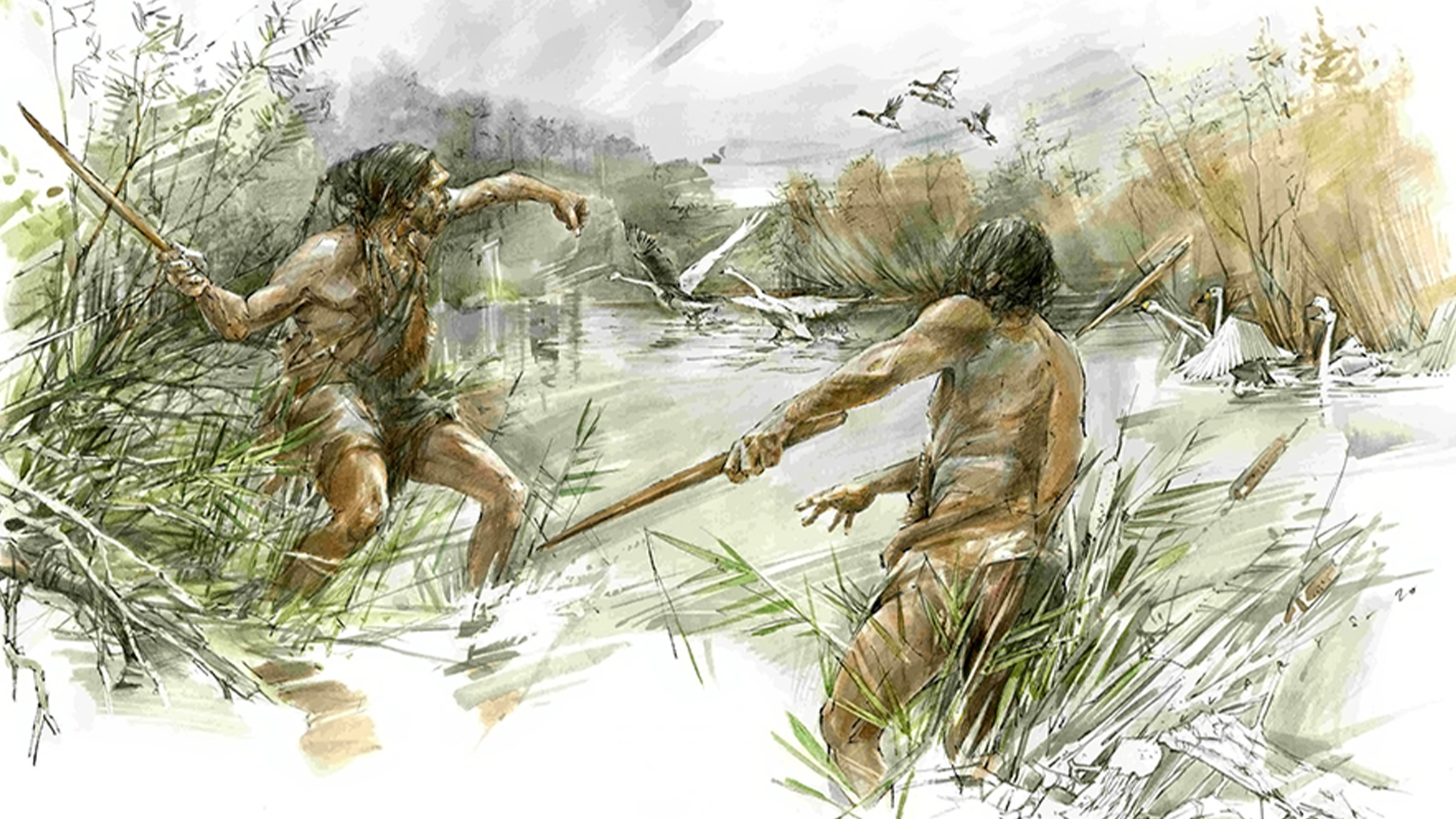

Our early human ancestors were a pretty busy bunch, cooking up brown crabs in caves in Portugal, mastering archery, and even taking on weaving. They may have been master woodworkers. According to a study published July 19 in the journal PLOS ONE, a 300,000-year-old wooden hunting weapon was scraped, seasoned, and sanded before it was used to kill animals. This new finding indicates that early human woodworking techniques were more sophisticated and developed than scientists once believed. Creating lightweight weapons may have enabled group hunts of smaller and medium sized animals.
[Related: Women have been skillful, purposeful hunters in most foraging societies.]
The two-and-a-half foot long stick was first discovered in Schöningen, Germany in 1994 alongside other tools including throwing spears, thrusting spears, and a second throwing stick that was similarly sized. This new study used some of the advances in imaging techniques that have emerged in the almost three decades since the stick’s discovery—micro-CT scanning, 3D models, and 3D microscopy—to take a closer look.
“Our study confirms that this tool is the earliest known ‘throwing stick’, which is a weapon that was thrown rotationally, similar to a boomerang,” co-author and University of Reading palaeolithic archaeologist Annemieke Milks tells PopSci. “The slight curve of the tool, as well as how it was shaped to have more mass towards one half, rather than in the middle, would have helped it to rotate. We think that it might have been thrown at distances as far as 30 meters [98 feet].”
The stick was most likely used to hunt medium sized game such as red and roe deer, and potentially quicker and smaller prey including birds and hare. It likely would have been thrown like a modern day javelin. While it is lightweight, the high velocities at which these weapons can be launched could have resulted in some deadly high-energy impacts.
The carefully shaped points, fine surface, and polish from handling also suggested that it was part of a personal kit that was repeatedly used, instead of a quickly made tool that was thrown away. The 3D microscopy and micro-CT scanning helped the team identify all of the building steps, including how the bark was removed, how the two points were shaped, and how the wood was worked away to force a more aerodynamic weapon.

“We were really excited to see just how many steps and how detailed the woodworking is on this tool. We could also see that they sanded the surface to make it finely finished, and that some polish shows they used this tool for a really long time. This was a tool that was beautifully crafted and used for some time,” says Milks.
[Related: Archery may have helped humans gain leverage over Neanderthals.]
These early hunting weapons can also be thought of as tools that whole communities would use. Footprints belonging to both adults and children have been discovered at Schöningen, indicating that children were present at this site. At this time, hunting was key to survival, some children as young as three or four would learn to throw and use weapons and girls and women likely weren’t excluded from learning these crucial skills.
“In some societies, they start hunting in groups of kids, without any adults at all, and then in their teenage years they start hunting larger animals,” says Milks. “Although we don’t know for sure who threw this weapon, smaller tools like this throwing stick may have been particularly well-suited for kids to learn with.”
The stick is currently on display at the Forschungsmuseum Schöningen.
